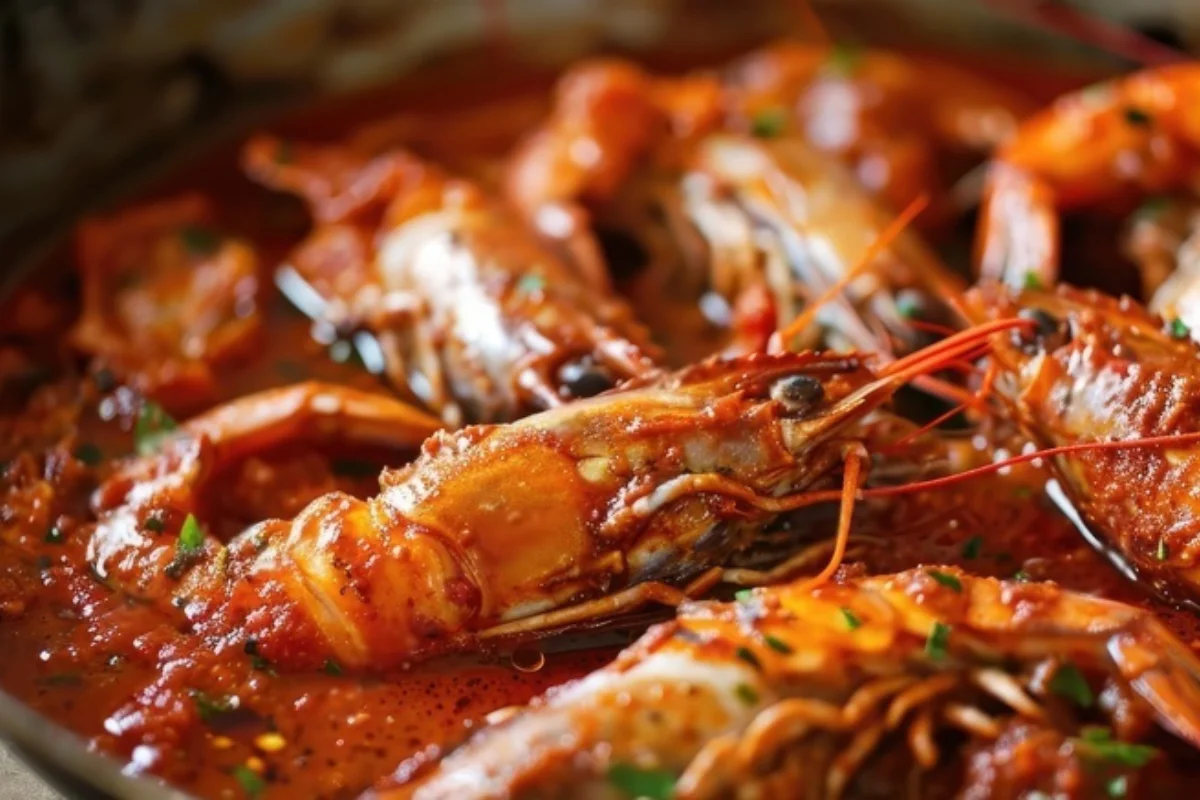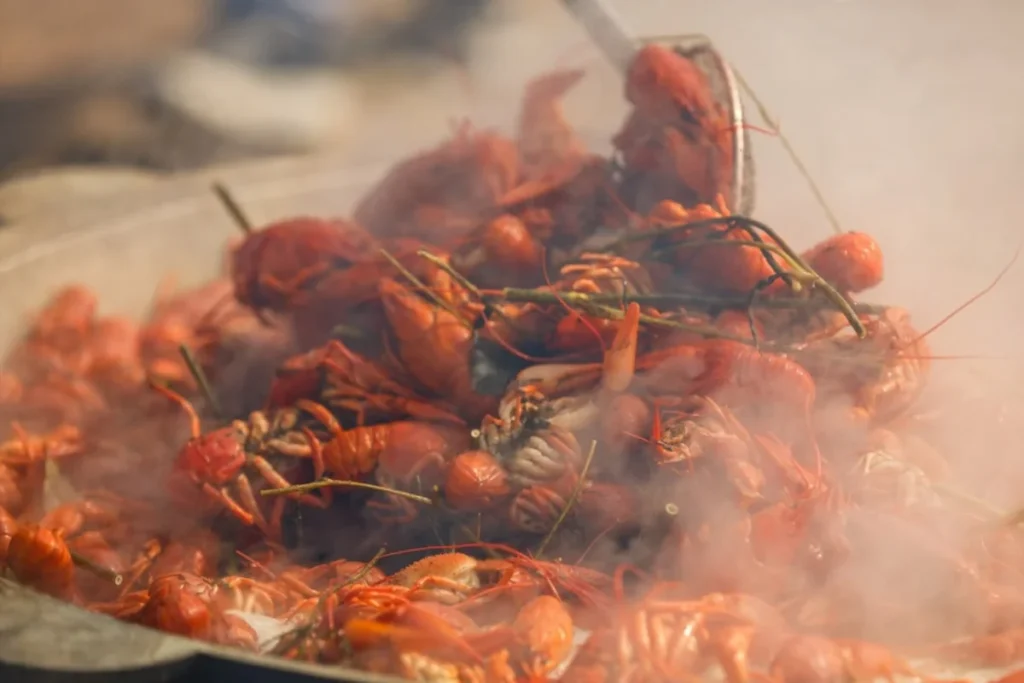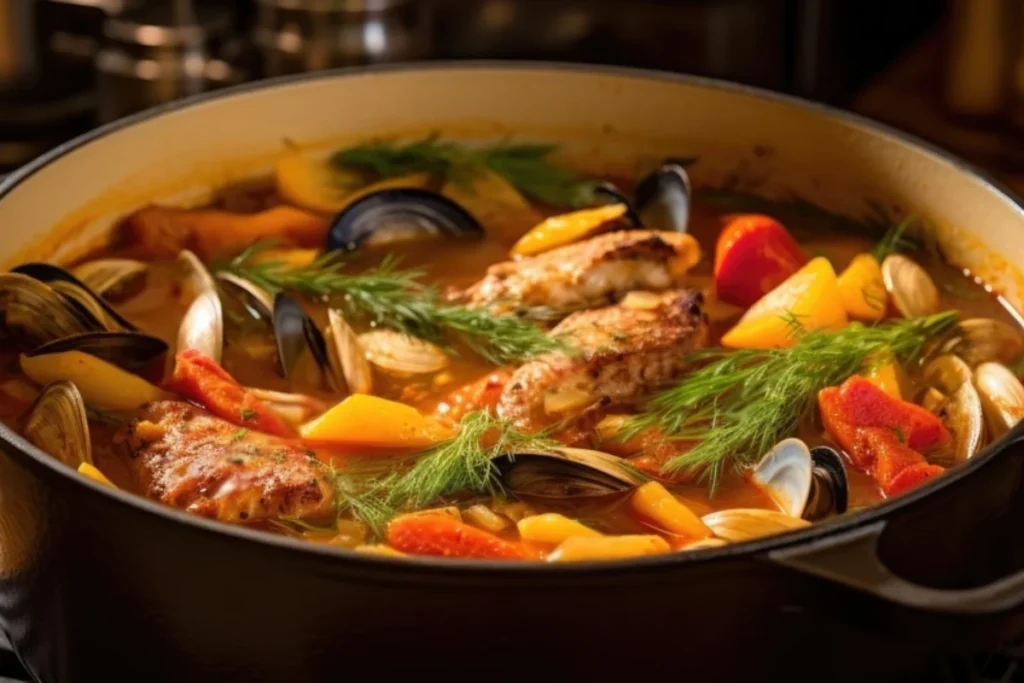Seafood boil represents a beloved culinary tradition deeply rooted in various coastal regions across the globe. This communal feast, known for its vibrant flavors and hearty ingredients, brings people together over a table laden with steaming pots of seafood, corn, potatoes, and sausages. The essence of a seafood boil lies in its simplicity and the joy of sharing, making it a popular choice for gatherings and celebrations.
Originating from different cultures, the seafood boil varies by region, each adding its unique twist to the basic recipe. For example, the Low Country Boil from the southeastern United States emphasizes shrimp, while the Cajun and Creole versions from Louisiana introduce a spicy kick to the mix. Discover the rich history of seafood boils and how they’ve evolved into the cherished events we know today by exploring The Delicious History of Seafood Boils!. These variations not only highlight the local seafood but also the community’s culinary preferences and traditions.
The key to a successful seafood boil lies in the selection of fresh ingredients and the careful layering of flavors. Seasonings play a crucial role, with blends like Old Bay, Cajun, and Creole mixtures adding depth and heat to the dish. For those looking to dive into the preparation of this delightful feast, the Ultimate guide to preparing a seafood boil offers step-by-step instructions and tips to ensure a flavorful experience. From choosing the right seafood to mastering the perfect spice mix, every detail contributes to the final taste and enjoyment of the boil.
In essence, a seafood boil is more than just a meal; it’s an experience that celebrates the bounty of the sea and the warmth of community. Whether you’re a seasoned pro or a curious newcomer, the journey to creating your own seafood boil promises a delicious adventure.
Key Ingredients of a Seafood Boil
Seafood Selection
Selecting the right seafood is pivotal to the success of any seafood boil. The variety and quality of seafood not only influence the flavor but also the overall experience of the feast. Here are some essential tips and options for choosing the best seafood for your boil:
- Shrimp: A staple in most boils, shrimp should be fresh or frozen and properly deveined. Large or jumbo sizes add a wow factor.
- Crabs: Blue crabs are traditionally used, but Dungeness or snow crabs also offer sweet meat that complements the spicy broth.
- Lobster: Though not always included, adding lobster tails or whole lobsters can elevate your boil to a luxurious level.
- Crawfish: A must-have in Cajun boils, crawfish bring authenticity and a unique flavor that’s both sweet and succulent.
When choosing seafood, freshness is key. Look for bright eyes, firm flesh, and a clean smell, indicators of quality and freshness. For those not near the coast, frozen seafood is a viable option, but ensure it’s thawed properly to maintain texture and flavor.
Incorporating a variety of seafood not only enhances the visual appeal but also caters to different palates, making the boil a memorable culinary adventure. Remember, the best seafood options for your next boil should reflect the season’s best offerings and your guests’ preferences.
By focusing on quality and variety, your seafood selection will lay the foundation for a flavorful and festive boil. Whether you’re gathering for a special occasion or simply enjoying the weekend, the right seafood mix will guarantee a deliciously successful event.
Vegetables and Sides
Vegetables and sides play a crucial role in balancing the flavors and textures of a seafood boil. They absorb the spices and seasonings, adding depth and richness to the dish. Here are the key vegetables and sides to include:
- Corn on the Cob: Corn adds sweetness, contrasting nicely with the spicy seafood. Break ears into halves or thirds for easier sharing.
- Potatoes: Small, red or baby potatoes are ideal. They soak up the broth, becoming flavorful morsels.
- Sausages: Andouille or smoked sausages contribute a savory, spicy element that complements the seafood.
- Onions and Garlic: These aromatics infuse the boil with depth and complexity. Quarter onions and smash garlic cloves for easy prep.
Incorporating these vegetables and sides not only enriches the meal but also ensures a well-rounded feast. Each component, from the sweet corn to the hearty potatoes, plays its part in creating a harmonious blend of flavors. Remember, the key to a successful seafood boil lies in the balance of seafood, vegetables, and sides, all coming together for a communal dining experience that’s both delicious and memorable.
Seasonings and Spices
The seasonings and spices are the soul of a seafood boil, infusing the dish with vibrant flavors and aromas. Choosing the right blend can elevate the meal from good to unforgettable. Here are the essentials:
- Old Bay Seasoning: A classic choice, Old Bay provides a spicy, savory depth with hints of bay leaves, celery salt, and mustard.
- Cajun and Creole Mixes: These blends offer a kick with ingredients like paprika, cayenne, garlic powder, and oregano.
- Lemon and Herbs: Fresh lemon juice and zest, along with herbs like parsley and dill, add brightness and freshness.
- Garlic and Onion Powder: These powders complement the fresh versions, intensifying the overall flavor profile.
- Cayenne Pepper or Red Pepper Flakes: Adjust the heat to your liking with these spicy additions.
Incorporating these seasonings and spices ensures each bite is packed with flavor. The key is to balance the heat from the cayenne or red pepper flakes with the acidity of lemon and the complexity of herbs and other spices. This harmony of flavors makes the seafood boil not just a meal but an experience to remember.
Cooking Liquids and Oils
The choice of cooking liquids and oils significantly influences the flavor and texture of a seafood boil. Here’s how to select the best options:
- Water vs. Stock: Using stock (chicken, vegetable, or seafood) adds richness and depth compared to plain water.
- Butter: Melted butter lends a creamy, luxurious finish, enhancing the natural flavors of the seafood.
- Olive Oil: A drizzle of extra virgin olive oil before serving adds a fruity note and helps to bind spices to the ingredients.
Selecting the right liquids and oils is crucial for achieving the desired flavor profile. Stock brings complexity, butter offers richness, and olive oil introduces a subtle, fresh layer. Together, they create a harmonious base that elevates the entire boil.
Additional Ingredients
In addition to the core components of seafood, vegetables, and seasonings, a variety of additional ingredients can further enhance the richness and diversity of a seafood boil. These extras add unique flavors and textures, making the meal even more memorable:
- Eggs: Hard-boiled eggs absorb the spicy broth, offering a mild, creamy contrast to the other elements.
- Mushrooms: Mushrooms, especially button or cremini, soak up flavors like little sponges, adding earthiness.
- Artichokes: Quartered artichokes contribute a subtle bitterness and complexity, balancing the boil’s overall sweetness and spice.
- Lemons and Limes: Slices of lemon and lime can be added to the pot for a citrusy tang, or served on the side for squeezing.
- Fresh Herbs: Sprigs of parsley, dill, and thyme thrown into the boil or used as garnish add freshness and aroma.
Incorporating these ingredients not only enriches the flavor palette but also introduces a variety of textures, from the tender bite of mushrooms to the soft, absorbent eggs. Each addition is chosen for its ability to complement and absorb the boil’s spicy, savory broth, ensuring every element is deliciously seasoned. By carefully selecting these additional ingredients, you can elevate your seafood boil from a simple meal to a feast for the senses.
FAQs on Seafood Boil
What is the best way to season a seafood boil? The best way to season a seafood boil is by using a combination of spices such as Old Bay, Cajun or Creole seasoning, along with fresh herbs like parsley and dill, and citrus like lemon for brightness. Start with a base of garlic, onions, and your chosen spice mix, adjusting the heat level with cayenne pepper or red pepper flakes to taste.
How long should you cook a seafood boil? Cooking times vary depending on the ingredients. Start with the items that take the longest, typically potatoes, which may need about 20 minutes. Corn and sausage can follow after 10 minutes, and most seafood, such as shrimp and crab, only need 5-10 minutes. Lobster might take slightly longer, around 8-12 minutes. Always check for doneness based on the specific seafood used.
Can you make a seafood boil ahead of time? While seafood boils are best enjoyed fresh, you can prepare some components ahead of time. Vegetables can be prepped and seasonings mixed. However, seafood should be cooked at the last minute to maintain freshness and texture. If you must prepare ahead, reheat gently to avoid overcooking the seafood.
What are some common dipping sauces for a seafood boil? Popular dipping sauces include melted butter with a touch of garlic, cocktail sauce, and remoulade. A simple sauce can be made by mixing mayonnaise with Cajun seasoning, lemon juice, and hot sauce. Experiment with different combinations to find your favorite.
Is it necessary to use a seafood boil bag? While not necessary, seafood boil bags can make preparation and cleanup easier. They allow you to easily remove all the ingredients from the pot without having to fish them out individually, keeping everything intact and making serving more straightforward.
Can I add alcohol to the boil? Yes, adding beer or white wine to the cooking liquid can introduce additional flavors. The alcohol will cook off, leaving behind a subtle taste that complements the seafood and spices.
Conclusion
Crafting the perfect seafood boil is an art that celebrates the bounty of the sea and the joy of communal dining. It’s a blend of flavors, textures, and traditions that come together to create a memorable feast. Here are key takeaways:
- Balance is crucial, from selecting the right seafood to mixing the perfect seasonings.
- The experience is as important as the meal, fostering connections over shared plates.
For those looking to dive deeper into the world of seafood boils, including sauce recipes and pairing tips, consider exploring Yummy Binge’s Ultimate Guide to Seafood Boil Sauces: Recipes, Pairings, Tips. This resource offers invaluable insights into enhancing your seafood boil with the perfect sauces, ensuring each bite is as flavorful as it is memorable.
Ultimately, a seafood boil is more than ingredients simmering in a pot. It’s a celebration of community, culture, and the simple pleasure of good food. Whether you’re a novice or a seasoned cook, each boil offers a chance to explore, innovate, and delight in the flavors of the ocean. Here’s to creating more unforgettable moments around the table.


